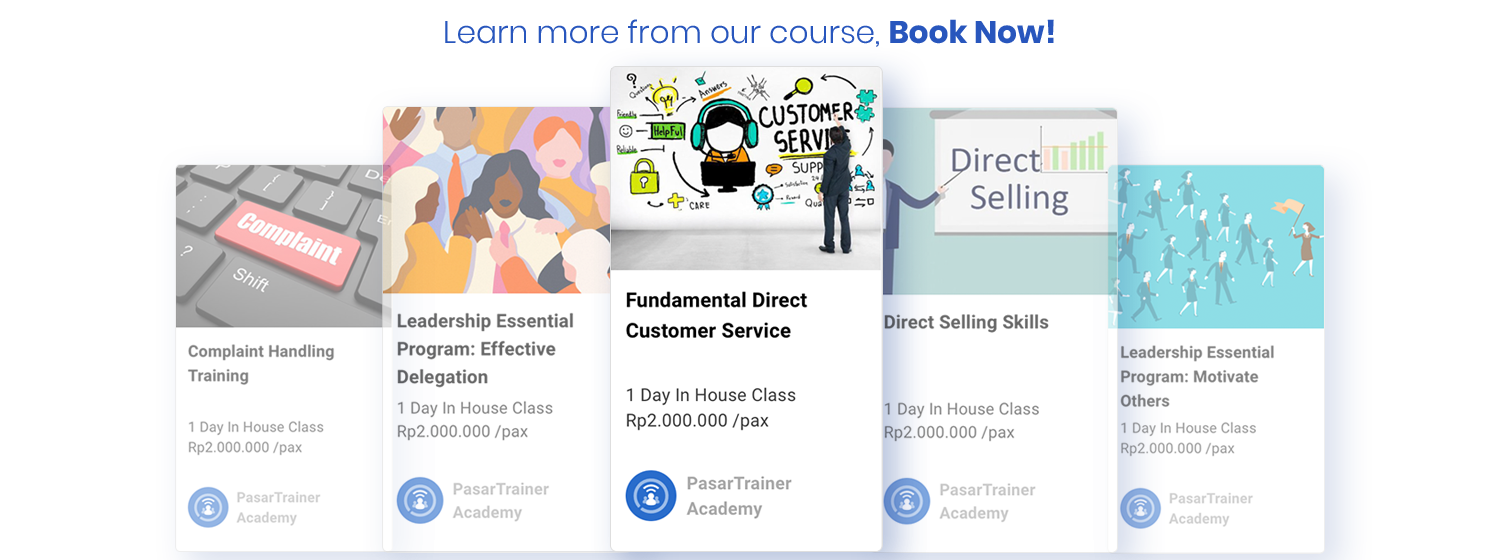Exceeding Customers’ Expectation in 2021

One year after COVID-19 partially shut down many of the world’s economies, consumers have developed new habits that we think will continue even after the pandemic passes. For a business to be able to survive and wins the competition, we need to refocus our targets and strategy first by analyzing all the factors related to the business, such as local government regulation in the health protocols to minimize the spreading of the Covid 19, International regulation related the pandemic situation, financial aspect of the company, financial aspect of targeted market, manpower management aspect, and also the important thing is the customers’ expectation on 2021.
Our March 2021 Global Consumer Insights Pulse Survey by PWC finds that many consumer behaviors trends have accelerated during the pandemic, and four essential fault lines have emerged that split global consumers into distinct cohorts. These patterns in how consumers shop, travel, work, engage with brands, and live their lives could have long-lasting implications for consumer market industries. Companies can be more prepared for the future by understanding these emerging cohorts and what their behaviors portend. I would like to address two of several results from the PWC global consumer survey 2021 that we need to know to deliver customer service exceeding the customers’ expectations.
1. Customer behavior, between online and in-store shopping, which channel they often used to bought products (fashion, books, electronic, not including groceries) in the past 12 months? And the result is as shown in the pictures

The data shows in 2020 and 2021, my first interpretation is Asian-Pacific population has higher buying habits rather than the Americas, Western Europe, and Africa/Middle East. It’s mean that the retail business has the opportunity to incline in the Asia-Pacific. My second interpretation from the data is in Asia-pacific the frequency of doing shopping online is 40%, while the frequency to do in-store shopping is 45%, to buy their needs on fashion items, clothes, books, electronics, home appliances, in this research not including groceries shopping. The percentage itself shows the population in the Asia-Pacific reminds them to choose in-store shopping even in the pandemic situation. My third interpretation based on the data above, we also can see, the online channel (mobile) shopping percentage is more often being used by the Asia-Pacific population, bigger than Americas, Western Europe, and Africa/Middle East, it is projecting that the numbers of online shopping channel usage can be inclining in Asia-Pacific since the online shopping can become a culture along with the familiarization to it and also the ongoing pandemic situation that we face. So, in another year more people will use a variety of channels to do shopping, not only in-store channels, but also online channels, in the various platform such as website, online marketplace, Facebook, Instagram, WhatsApp, TikTok, and many others platform in the futures.
2. The second that I want to address from the PWC Global Consumer Insight Pulse Survey 2021, is the distribution percentage of shopping channels that consumers used to bough products over the past 12 months.

From the data above, it is showing the variety channels that being used to do shopping, they are in-store channel, online channel trough mobile, Computer PC, tablet. Despite the impact of Covid 19, instore the data above, it is showing the various channels that are used to do shopping, they are in-store channel, the online channel through mobile, Computer PC, tablet. Despite the impact of covid 19, in-store shopping remains consumers’ channel of choice to do shopping. In that sense the interaction between the sales team and customers in the physical stores that still on demand by the customers, even in a pandemic situation. The interaction in the stores needs to be considered as an important aspect to be delivered by the company and also the salesperson/team by highly considered health and safety aspects and the customer convenience.
To give extra miles customer service, is health and safety the only concern from a customer? We need to have more information on the customers’ expectations in 2021, let us go deeper into customers' priorities based on their generation gap, from the result of the PWC Global Consumers insight Pulse survey 2021.

So, there are 4 priorities of the customers, convenience, health, and safety concern, price, and quality. For baby boomer’s generation above and X’s generation, the priorities in shopping are “convenience, health, and safety”. They do not care much about the price that they have to paid and the quality of the products compare to millennials’ generation and Z’s generation, it means generation baby boomers and generation X willing to pay more as long as they feel convenient, healthy, and safe during the transaction and also getting health and safety products. While for the millennials’ generation and Z’s generation more priorities to the price and the quality of the products, is not that they don’t have the concern to the convenience and health and safety, they do have, but since their financial not as Stabil and not much as the above their generation, that is why they put price and the quality of the product in the first and the second priorities.
Despite the order of the priorities in each generation, these 4 priorities still need to be delivered to all the generations, by the company, by operational team/sales people’s/customer service, or the people who physically meet the customers.
Delivery of customer services that suitable for the pandemic situation is one of the urgent priorities to all industries, this situation forces us to minimalized physical contact services and enforces the opening of omnichannel customer services. As a retailer, and food and beverages business practitioner, we’ll have to create a transaction experience that is as hassle-free as possible by making payments easier and offering omnichannel service, enabling technologies and contact-free delivery options. Amazon’s Just Walk Out contactless payment technology, now being sold to other vendors, is a great example, and many start-ups are competing with similar innovations. Retailers such as Carrefour are experimenting with facial recognition to ease payments, and the largest bank in Russia, Sberbank, has collaborated with supermarket chain Azbuka Vkusa to introduce biometric payment services in stores throughout the country. Nike’s ‘speed shopping option, in which shoppers reserve shoes online that they want to try on in-store, is another example. When customers arrive at the store, the shoes are waiting for them in a locker and can be purchased via mobile payment, with no need to interact with a person. The food and beverages industry, also need to be more aware and consistently apply healthy protocols during food preparation, food production, food services, including the way all the staff behaviors even during the staff break. They have to implement the healthy protocol and aware that potential customers or loyal customers might be around them and watching them, even when they are on their break time.
As we speak about the retail industry and F & B industry, whether it is groceries retail, luxurious retail, banking, fast food outlet, restaurant, the consistency of implementation customer service to meet or exceed customers’ expectation it’s becoming common issues in Indonesia. Many leaders, top management especially in groceries retail, luxurious retail, fast food, and restaurant think, that the secret recipe of having a consistent customer service delivery in the store/outlet/restaurant is only by giving one time or two times training events to the employees. This perspective is not applied in a financial retail institution such as banking and also hotel industry, since those two industries are more mature and structured compare to the groceries retail, luxurious retails, fast food, and restaurant in Indonesia. Most banking and hotel industry familiar with the comprehensive system in managing their customer service, they have specific department/division to manage the customer service, that usually named as a Consumer Service Assurance, Customer Service Quality, Quality Assurance, or Customer Experience. They also have customer services competition in their industry, which enforces them to compete.
Learn from the banking and hospitality industry, the retail industry also has to apply the comprehensive system in managing their customer service delivery. Before taking a huge decision about having a specific department or division, since it’s a new function in Retail, and since many retailer companies still facing economic challenge during the pandemic, we can be started by having a dedicated person or people (1 or 2 people) to manage the customer services in your retail stores/outlet/restaurant. Several steps need to be defined and executed in managing customer services, as an example before evaluating the service delivery by the salespeople, customer service, and operational team, the company/stores/outlet/restaurant need to have “a measurable customer service standard”, and another step is trained the employees to equip them with the knowledge, skills, and attitude that required to be able to deliver the customer service standard. Afterward, the dedicated person/people will have continually supervised, monitor, and giving strategic feedback and action plans to the management to ensure the consistency of customer service delivery by the sales team. As additional information, customer service evaluation also can give feedback on our product quality and availability, this information is important for related division and also for the business growth. How to monitor and evaluate the implementation is another topic that we will discuss in different articles.






